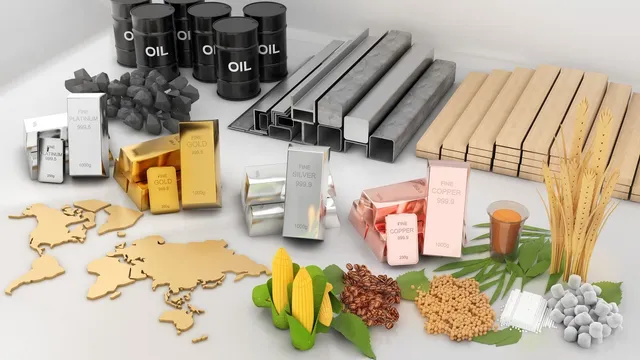For many new investors, the idea of trading commodities—things like oil, gold, wheat, or coffee—feels intimidating. Stocks and bonds might seem more familiar, but commodities have been around for centuries, often acting as a hedge against inflation and market volatility. In fact, some of the largest fortunes in history were built on commodities trading, from the early days of agricultural markets to today’s global futures exchanges.
But how can modern retail investors approach commodities in a safe and strategic way? Let’s break down what makes oil, gold, and agricultural products unique, why they matter, and how to invest in them without taking unnecessary risks.
Why Commodities Matter in a Portfolio
Commodities often move differently compared to stocks and bonds, making them a useful diversification tool. For example, when inflation rises, commodity prices—especially oil and agricultural goods—tend to increase as well. During the 2021–2022 inflation spike, oil prices surged from around $ 48 per barrel in early 2021 to over $ 120 in mid-2022, while food prices tracked by the FAO Food Price Index rose more than 30% year-on-year.
Gold, in particular, is often seen as a “safe haven.” During periods of geopolitical uncertainty or currency depreciation, investors flock to gold as a store of value. In 2020, when the pandemic rattled markets, gold prices touched all-time highs above $2,000 per ounce, reinforcing its reputation as a crisis asset.
Understanding Futures: The Core of Commodity Investing
Most commodities are traded through futures contracts, agreements to buy or sell a certain amount of a commodity at a set price on a future date. Futures markets were originally designed for producers—like farmers locking in a price for wheat—but today they are widely used by traders and institutions to speculate or hedge against price swings.
Ad esempio:
- An airline company might buy oil futures to protect against rising fuel costs.
- A jewelry manufacturer might hedge by purchasing gold futures in advance.
For retail investors, entering directly into the futures market can be risky, since it often involves high leverage. A small movement in price can lead to outsized gains—or painful losses. In fact, according to data from the U.S. Commodity Futures Trading Commission (CFTC), a majority of retail futures traders lose money over the long term, largely due to leverage misuse.
Safer Ways to Invest in Commodities
If you’re not ready to dive into futures contracts, there are more accessible ways to gain exposure to commodities:
- Commodity ETFs (Exchange-Traded Funds): These track the price of a single commodity (like gold) or a basket of commodities (like energy or agriculture). For example, SPDR Gold Shares (GLD) allows investors to buy gold without holding the physical metal.
- Mining and Energy Stocks: Buying shares in companies like oil producers, gold miners, or agricultural giants offers indirect exposure. However, stock prices are also influenced by corporate performance, not just commodity prices.
- Mutual Funds and Index Funds: Some funds allocate a portion of their portfolio to commodities for diversification, making them a simple entry point.
These methods remove some of the complexity and leverage risk, while still allowing you to benefit from commodity price movements.
Key Risks to Keep in Mind
While commodities can enhance your portfolio, they are not risk-free. Prices are often volatile, influenced by factors outside traditional finance: weather conditions, political instability, supply chain disruptions, and OPEC production decisions, just to name a few. For instance, the Russia-Ukraine conflict in 2022 sent wheat and oil prices soaring due to fears of supply shortages.
Additionally, commodities don’t produce income like stocks (dividends) or bonds (interest). Their value is entirely tied to price appreciation, which means timing and patience matter.
Smart Commodity Investing: Balance and Strategy
So, is investing in commodities like oil, gold, and agricultural futures a good idea? The answer depends on your goals. If you’re looking for diversification, inflation protection, and exposure to global economic trends, commodities can be a powerful addition to your portfolio. But diving into high-leverage futures contracts without experience can be dangerous.
For beginners, starting with ETFs or mutual funds tied to commodities is often the safest path. Think of commodities as a seasoning in your financial “recipe”—a small but impactful addition, not the entire meal.
A Hedge, Not a Gamble
Commodities have always been at the heart of global trade and wealth building, and they still play a crucial role in modern investing. Whether it’s oil fueling the economy, gold preserving value, or agriculture feeding billions, these assets move in ways that can protect your portfolio when markets get rough.
The smartest approach for retail investors is not to chase quick profits in futures markets, but to integrate commodities thoughtfully, balancing risk and reward. Done right, commodities can help you build a portfolio that withstands inflation, uncertainty, and the test of time.

